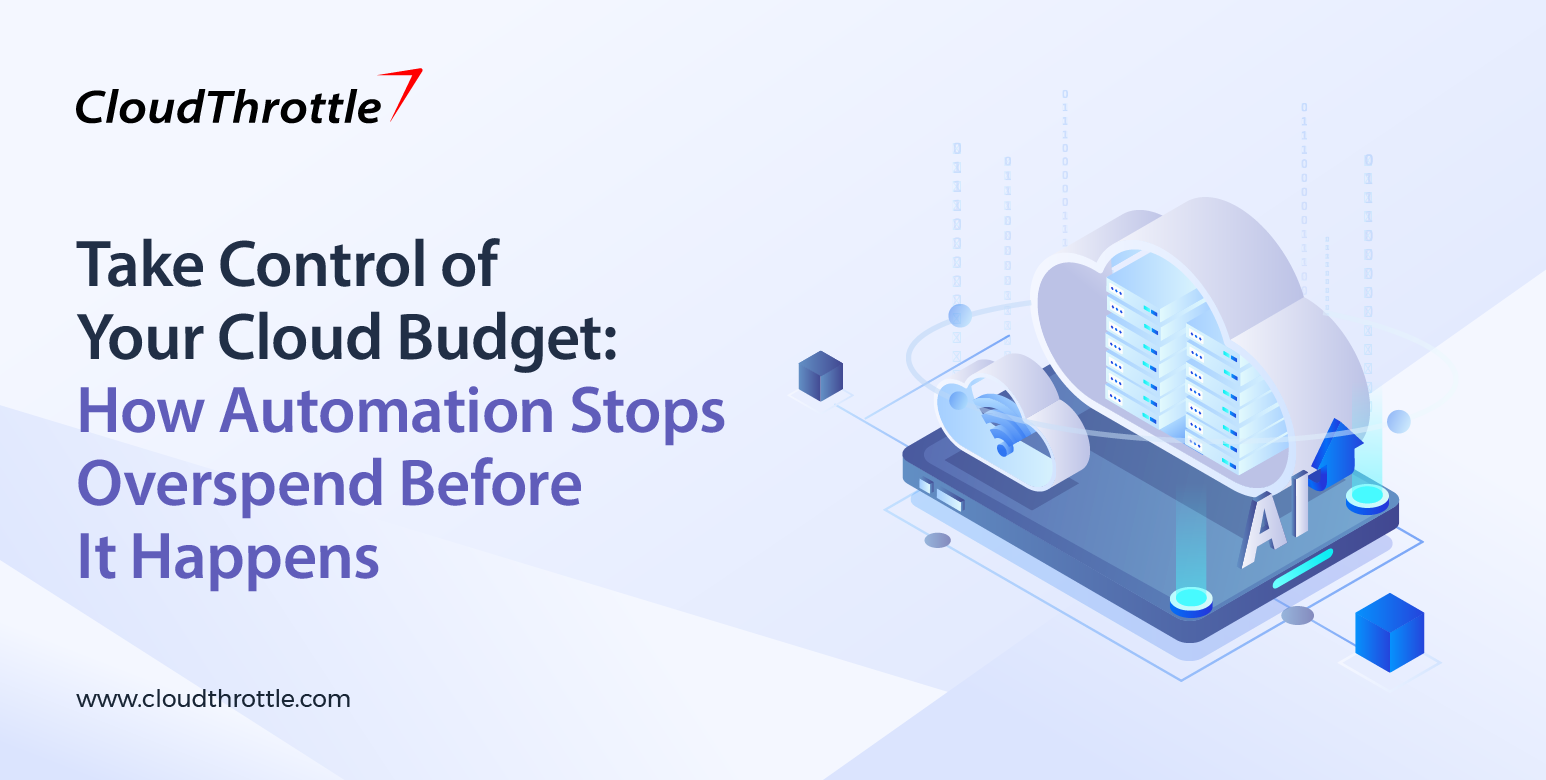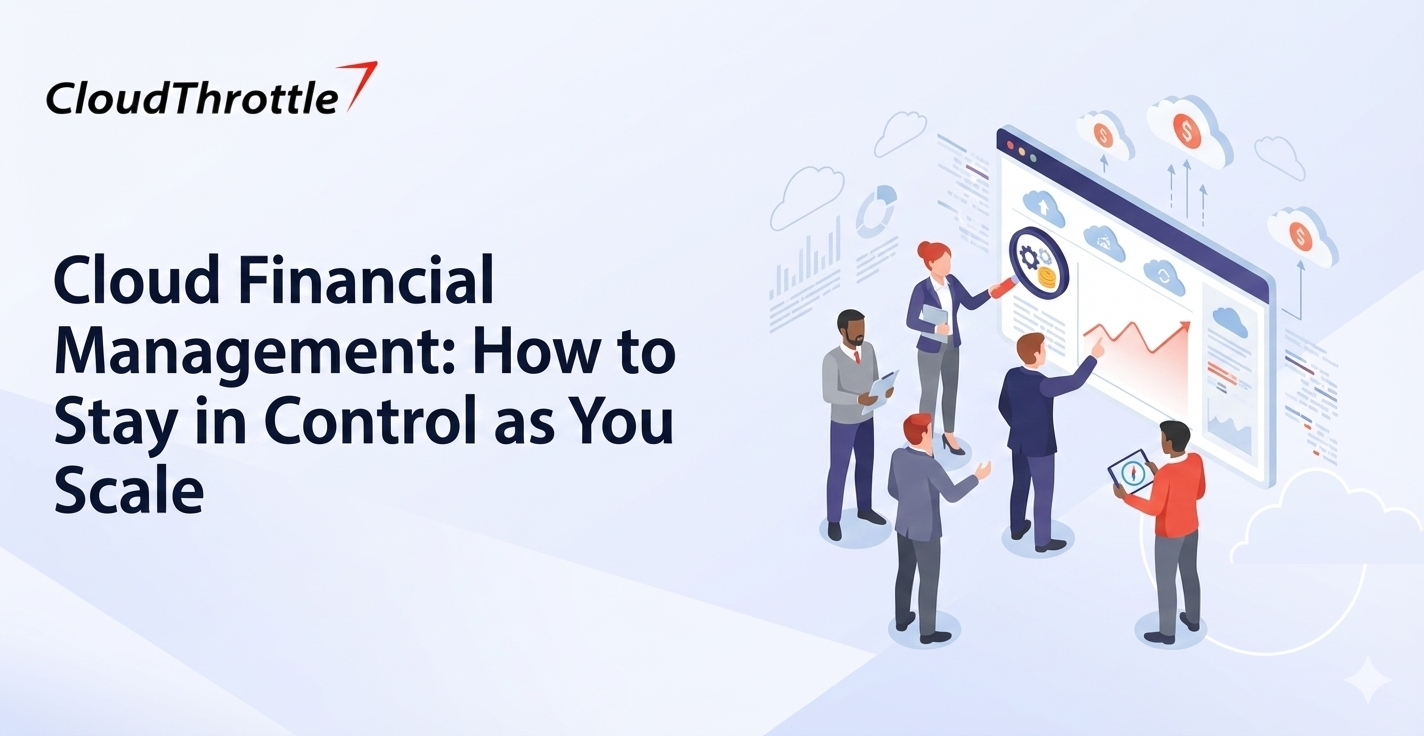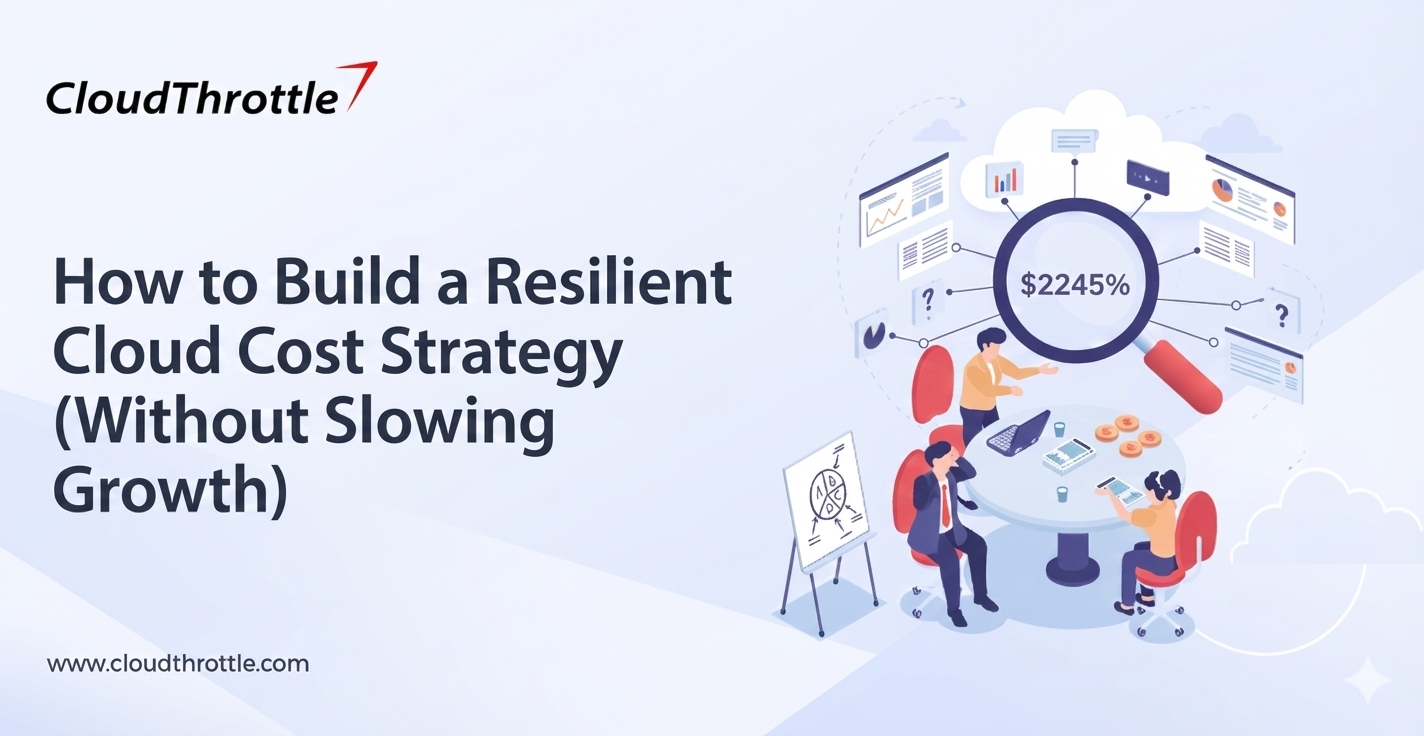Effective management of cloud expenses separates high-performance teams from those that struggle to meet financial objectives and avoid surprise invoices that derail roadmaps. This guide lays out clear methods that protect budgets and bring together engineering and finance stakeholders on the same page. Read on for detailed steps that combine automated policies with strategic planning to start reducing waste immediately through cloud budget management.
What Is Cloud Budget Management and Why It is Important?
Every business runs workloads on virtual machines, containers, and serverless platforms that incur charges whenever they process data or store files. Cloud budget management gathers billing details from multiple accounts into a single interface and applies spending limits linked to strategic priorities.
Leaders assign budgets per project, department or environment and tag each resource so that cost center data flows into unified dashboards. Automated notifications fire at key usage levels so teams adjust resource configurations before actual expenses exceed forecasts. A methodical routine of tagging, threshold alerts, and budget reviews drives continuous improvement of financial guardrails.
How Cloud Cost Automation Prevents Overspending Before It Starts
The following steps outline how cloud cost automation enforces cloud budget management, strengthens cloud cost control, and ensures effective cloud overspend prevention:
Step 1: Inventory and Tag All Cloud Resources
Audit every instance, storage bucket, and container. Attach metadata identifying owner, project, and environment. Proper tags further enable precise cost allocation and ensure policies apply to every asset, forming the foundation of cloud budget management.
Step 2: Define Cloud Spend Policies and Alert Thresholds
Translate metadata into rules that set monthly or quarterly limits per tag group. Configure alerts at 50%, 70%, and 90% of budget use so teams receive clear warnings and can act early, supporting proactive cloud cost control and cloud overspend prevention.
Step 3: Automate Resource Scaling and Suspension
Implement policies that suspend idle instances after defined inactivity periods and scale down clusters during low-traffic windows. This automation prevents pay-as-you-go fees on unused compute capacity, advancing cloud cost automation and cloud cost control without affecting peak performance.
Step 4: Schedule Log Cleanup and Storage Archival Jobs
Create automated jobs that archive older logs and snapshots to low-cost storage tiers on a set schedule. Include tasks that purge data past retention windows so storage fees do not grow unchecked, key for ongoing cloud overspend prevention.
Step 5: Embed Budget Gates in CI/CD Pipelines
Integrate cost checks into pull request workflows. Configure pipelines to fetch projected spend metrics, compare them against thresholds, and block deployments when changes exceed limits. Require manual approval for any exceptions, closing the loop on cloud cost automation and ensuring robust cloud budget management.
Key Benefits of Implementing Cloud Overspend Prevention
Automating cost controls delivers tangible advantages:
Real Time Cloud Cost Visibility
Dashboards show spend per service and project. Clear tagging and reporting support internal chargeback models that assign accountability to every team, strengthening cloud budget management and cloud cost control.
Early Detection of Cloud Cost Spikes
Threshold alerts flag sudden increases in compute, storage, or network use so teams investigate root causes before bills grow large, an essential part of cloud overspend prevention and cloud cost automation.
Reduced Manual Billing and Audit Work
Automated reports replace repetitive invoice reviews. Engineers regain hours they would otherwise spend on cost analysis and redirect that time toward innovation, thanks to cloud cost automation and improved cloud budget management.
Improved Cloud Budget Forecasting Accuracy
Historical spend curves feed predictive models that account for seasonal factors and upcoming campaigns. Planning sessions rely on data rather than guesswork, advancing both cloud budget management and cloud cost control.
Top Causes Behind Uncontrolled Cloud Spend
Unexpected expenses often arise from overlooked configurations, underlining the need for robust cloud overspend prevention and cloud cost control:
Forgotten or Orphaned Cloud Resources
Volumes, snapshots, or test instances that remain active after experiments rack up charges long after they serve no purpose.
Log and Monitoring Data with Excessive Retention
Monitoring tools with default retention windows outlast real needs and inflate storage expenses over time.
Overprovisioned and Unbounded Auto Scaling Policies
Policies without maximum caps launch extra instances in response to minor traffic blips and send compute costs upward, highlighting the importance of cloud cost automation.
Inefficient or Misaligned Reserved Instance Commitments
Purchasing reserved instances based on peak demand without checking average utilization leads to underused capacity.
Unreviewed Marketplace Fees and Partner Add-Ons
Third party services and integrations sometimes slip into billing statements without explicit review and introduce unexpected charges.
Best Practices for Maximizing Cloud Cost Control
These tactics reinforce cloud cost automation and strengthen financial governance:
Implement Cloud Chargeback Accounting Models
Assign costs to teams so each group owns its resource decisions and feels accountable for spend, enhancing cloud budget management and cloud cost control.
Define and Enforce Cloud Tagging Standards
Publish metadata conventions in a central guide and include pre-deployment checks that reject untagged resources to support effective cloud cost automation.
Apply Cost Policies as Code Across Cloud Environments
Embed cost rules in infrastructure templates. Validate them during code reviews to ensure consistent application of cloud cost control and cloud cost automation.
Secure Long-Term Savings Through Committed Use Discounts
Analyze usage patterns, then purchase reserved capacity or savings plans aligned with typical workloads to secure lower unit costs, an essential part of cloud budget management.
Run Regular Cloud Optimization Sprints Across Teams
Hold focused sessions where cross-functional teams audit spend, apply rightsizing recommendations, and remove waste to maximize cloud cost control and cloud cost automation.
Integrating Cloud Cost Data into Development Pipelines
Financial guardrails belong alongside the build and test steps. Custom scripts or plugins fetch live cost metrics from cloud APIs, then compare projections against policy thresholds. Pull requests display warnings or fail when proposed changes push spend above allocated limits, ensuring cloud cost control and cloud overspend prevention.
Notifications flow into collaboration channels so developers discuss cost impacts alongside code review comments. Storing cost validation scripts in version control fosters peer review of budget policies, tracks changes, and supports continuous improvement in cloud cost automation and cloud budget management.
Choosing the Right Cloud Cost Automation Tool for Your Business
Tool selection hinges on matching features to needs. Here is how you can make the right selection:
Evaluate Visibility Across Spend Categories
Evaluate visibility across compute, storage, network, and licensing expenses for comprehensive cloud cost automation.
Confirm Policy Engines and Integration Capabilities
Confirm policy engines support custom thresholds and that alerts integrate with incident management and chat tools, streamlining cloud cost automation and cloud cost control.
Review Forecasting and Optimization Modules
Review forecasting modules that analyze historical spend to predict future costs and recommend optimizations before budgets reset. This is essential for proactive cloud overspend prevention and effective cloud budget management.
Inspect Anomaly Detection Engines
Inspect anomaly detection engines for their ability to link cost spikes to specific deployments, supporting real-time cloud cost control.
Run Pilot Projects
Run pilot projects to assess dashboard clarity, alert accuracy, and administrative overhead before committing to a long-term cloud cost automation solution.
Advanced Strategies for Optimizing and Controlling Cloud Spend
Elevating cloud cost control combines technical sophistication with strategic foresight:
Predict Cloud Spend Using Machine Learning Models
Use ML models to forecast spend based on usage patterns. Training algorithms on historical data reveals hidden trends and suggests proactive adjustments for better cloud budget management.
Integrate Policy as Code to Automate Cloud Cost Governance
Define cost rules alongside security and compliance policies in version-controlled templates. Automated policy enforcement ensures consistent guardrails across environments, advancing cloud cost automation.
Adopt Unified Multi‑Cloud Budgeting Policies
Apply unified tags and policies across providers. Centralized dashboards consolidate spend data from each vendor and expose cross‑cloud inefficiencies for superior cloud overspend prevention.
Optimize Using Reserved vs Spot Instance Strategy
Balance guaranteed capacity with cost savings by mixing reserved instances for baseline workloads and spot instances for flexible compute jobs, enabling ongoing cloud cost optimization.
Building a Cost Conscious Culture Across Cloud Teams
Long-term success depends on people adopting cost awareness as part of daily routines:
Educate Teams Through Cloud Pricing Training Programs
Offer workshops that teach teams how pricing models work for instances, storage tiers, and network egress charges, building a foundation for cloud budget management.
Reward Cloud Efficiency Using Internal Incentive Structures
Reward teams for meeting budget goals and recognize creative cost reduction efforts in sprint reviews, fueling continuous cloud cost optimization.
Foster Cross-Functional Cloud Spend Optimization Forums
Host regular meetings where finance, operations, and engineering discuss spend trends and plan joint optimizations, driving organization-wide cloud cost control.
Cloud Spend Monitoring and Reporting Frameworks That Work
Reporting structures keep stakeholders informed with minimal manual effort:
Build Custom Cloud Cost Dashboards
Build views that highlight critical metrics such as top cost drivers, untagged resources, and forecast variances for actionable cloud budget management.
Send Automated Weekly Cloud Budget Reports
Email executives weekly summaries of budget performance, alert history, and optimization recommendations, automating cloud cost control communication.
Trigger Real‑Time Alerts for Cloud Spend Incidents
Create notifications that trigger when specific cost anomalies arise and route them to on‑call personnel for rapid investigation, a key element in effective cloud overspend prevention and cloud cost automation.
Budget Forecasting and Modeling for Cloud Spend Planning
Accurate forecasts guide planning cycles and capital allocation:
1. Model Cloud Budget Scenarios Based on Growth Projections
Model different growth trajectories and budget headroom under varied traffic or storage demands.
2. Perform Historical Trend Analysis on Cloud Expenses
Compare actual spend against forecasts over time, then refine models to improve future predictions.
3. Simulate Financial Impact of Cloud Deployments
Simulate feature rollouts or campaign launches to estimate incremental cloud costs before coding begins.
Conclusion: Take Control of Cloud Budgets with Automation
Effective budget governance demands a combination of automated policies, clear reporting and cultural alignment. Organizations that adopt these practices prevent overspend before it happens and drive sustainable innovation without fear of runaway cloud bills. Take control today with CloudThrottle and transform financial discipline into a growth engine for your business.
👉 Request a Demo
















